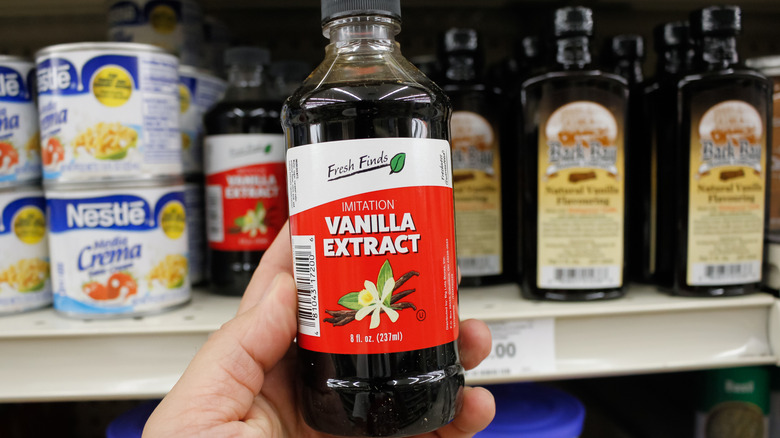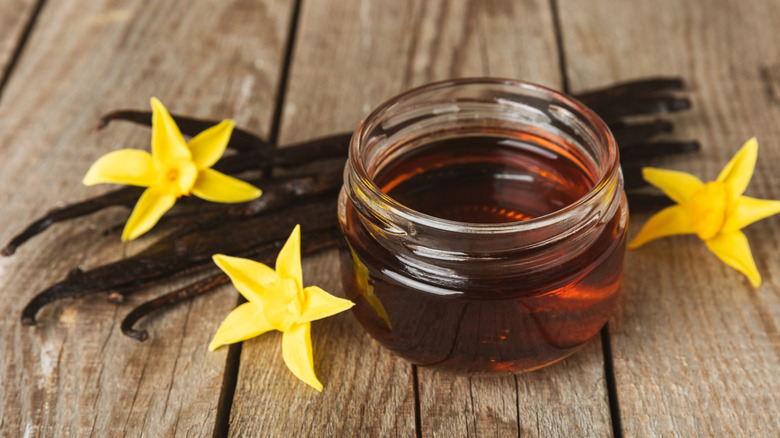Here's When Imitation Vanilla Is Actually Better To Use Than Real Vanilla
In many instances in the kitchen, using an authentic version of an ingredient is considered better than using an imitation of it, especially as far as its quality is concerned. Many different imitation foods on the market serve their purposes of being easier to find or use quite well, but a few, like vanilla extract, can also be an improvement on the original under certain circumstances. For vanilla extract, its use is especially necessary when you're cooking or baking with the staple ingredient; the complex flavors of natural vanilla go away when it reaches the temperature of 300 degrees Fahrenheit, thus resulting in a weaker contributing taste than you'd get using imitation vanilla.
For this reason, imitation vanilla extract, which is made using an artificial form of vanillin — the most active flavoring agent within vanilla beans — is ideal for many recipes that require high-heat baking. This makes the fake version better-suited for recipes like bread or cake, which necessitate using high heat to be made correctly. While some believe that using pure vanilla extract can be absolutely revolutionary for recipes like chocolate chip cookies, some view using the ingredient and actively sacrificing its complexity as wasteful, as there are better uses for the oftentimes expensive ingredient.
When to use pure vanilla extract over imitation vanilla
Another reason why people sometimes decide not to use pure vanilla extract is due to its high price and unavailability. While many professional bakers recommend Costco's relatively affordable version of vanilla extract, the ingredient is notoriously difficult to grow and has been subject to climate issues. Due to this, vanilla is generally quite expensive, and in some cases, the real is difficult to find.
However, if you do get your hands on pure vanilla, it's still an incredibly useful ingredient regardless of its high-heat limitations. When it comes to the best uses of pure vanilla extract, it's all about finding recipes that fit the ingredient's flavor but aren't cooked at an excessively high temperature. A great example of this is the pro tip for making crème brûlée by cooking it to an internal temperature of no higher than 185 degrees Fahrenheit to avoid allowing it to boil. Similarly, custards and puddings can benefit greatly from the rich and complex flavors of pure vanilla extract without worry.

